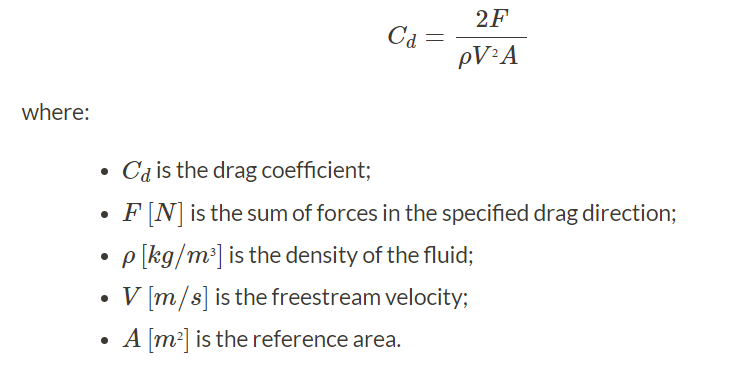I am trying to find the drag coefficient for a rocket moving directly upwards at approx. 277 ft/s and I consistently get a drag coefficient of around 0.8-0.9. This directly contradicts the expected result of around 0.3-0.4 that my team has experimentally calculated in the past. Is there something wrong with the way I am setting this simulation up? It is modeled as a stationary rocket with a 277 ft/s air flow against it in the negative z direction. The only thing I can think of is that I am inputting the wrong information or my mesh is not accurate enough, but I have double-checked all my input information and have tried the run on several meshes with little effect. If someone could check my settings and ensure I haven’t set up the simulation incorrectly, that would be much appreciated. Thank you!
Link here
Hi there,
Thank you for posting on the Forum!
We will take a look and shortly get back to you 
Thank you! I forgot to mention, the run that would be most helpful to check is “more complicated run” under the Subscale Incompressible (half) simulation.
@bbhagat98 any updates so far? Time is of the essence for this simulation and I want to be able to get an accurate result as soon as possible.
I see that in the simulation run ‘please god’, the drag coefficient is quite reasonable, 0.45
Can you tell me what you changed in that simulation?
Also, it will be helpful to know how you computed the experimental results.
1 Like
In that run, I used the reference area of the whole rocket when simulating only half of the rocket and using a symmetrical wall. In the run “more complicated run”, I used the reference area of half of the rocket (as simulated for) and got a drag coefficient of around 0.9.
To calculate our drag coefficient experimentally, we record altimeter data to find our rocket’s velocity and apogee, and put the data into a SolidWorks simulation to find the approximate drag force on the rocket. We then calculate the drag coefficient from the drag force equation.
Hi!
Drag forces and drag coefficients are related to each other based on a formula that requires some user input, most notably the reference area A and the freestream velocity V:
Since these values are ‘arbitrary’ to some extent, I sometimes find users having difficulties to compare data. As you can infer from the equation, forces will vary with velocity and, if they are not linearly correlated, Cd will also change with velocity.
Suggestion: compare forces rather than coefficients, because forces do not rely on user-defined parameters. Furthermore, when comparing simulation tools, take extreme caution so that both runs are set as close as possible and so that both are fully converged.
Remember to sum up both viscous and pressure forces, as both of them should be accounted for when it comes to lift & drag.
Cheers
After comparing my simulation to an OpenRocket simulation with similar conditions, it returned a drag coefficient of 0.8. After further reviewing my team’s previously obtained drag coefficient, I found a few inconsistencies with their calculations. I think it’s safe to say that the simulations I’ve been running are accurate and I have not been going insane. Thank you all for all your help :))
